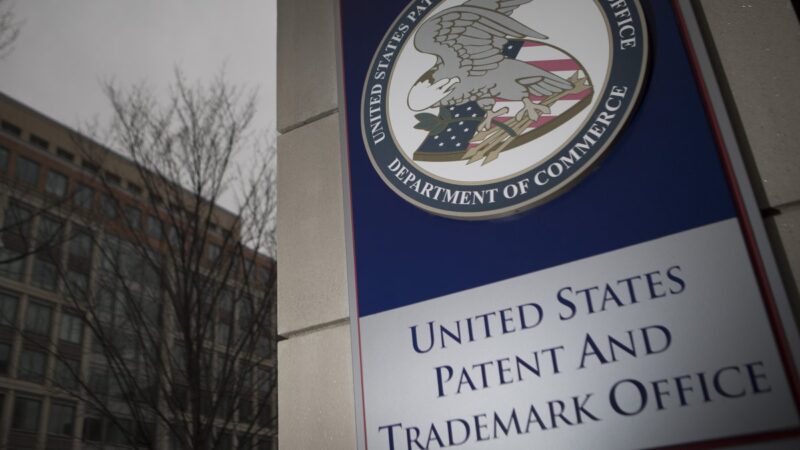New Efforts to Promote U.S. Innovation: The PERA and PREVAIL Act in Context

By Christopher Borges and Alexander Kersten
The United States has a long tradition of technological innovation, and U.S. inventors and innovators continue to drive the creation of new companies, jobs, and economic growth. Secure intellectual property (IP) rights are essential to spur this innovation. Critically, patents transform ideas into property that can be assigned and protected, allowing small businesses to attract investment and collaborate with other firms with the assurance that their ideas will not be stolen. For this reason, the community of inventors, entrepreneurs, and start-ups repeatedly emphasize the importance of secure IP rights in providing them a path to market entry, growth, and fair participation.
However, there are actors who abuse the patent system to eliminate and extort competitors, stifling innovation by preying on start-ups, small businesses, and inventors that often do not have the resources to pursue expensive and time-consuming litigation. Some of the so-called Big Tech firms are known to infringe on patents and rely on large and well-compensated legal teams to drag out litigation and avoid penalties, or simply swallow fines as a cost of doing business. Other observers of the patent system decry “patent trolls,” who purportedly weaponize overly broad patents to extort legitimate businesses by initiating questionable lawsuits.
Striking this balance—strengthening IP protections to promote innovation while minimizing the negative effects of bad actors—is central to the debate regarding two bills proposed earlier this year: the Patent Eligibility Restoration Act (PERA) and the Promoting and Respecting Economically Vital American Innovation Leadership (PREVAIL) Act. Combined, the two bills aim to strengthen IP protections by clarifying and expanding patent eligible subject matter, reducing duplicative litigation, and raising the standard for invalidating patents in certain situations. Proponents of the bills claim that they would facilitate the creation of new start-ups while also protecting them from predatory lawsuits. Detractors, however, assert that these bills would empower bad actors and ultimately hurt competition by making it harder to invalidate overly broad and vague patents.
Given that innovation is the new frontline in geopolitical competition, it is important that the United States update the legal framework of its IP system to advance its technological leadership. While previous iterations of PERA and the PREVAIL Act have made appearances on the legislative docket with limited success, Congress’ current preoccupation with cutting-edge technology like artificial intelligence might provide the momentum needed to advance one or both bills. Therefore, it is imperative to understand the bills’ potential impact on innovation.
Non-practicing Entities
Much of the debate surrounding patent abuse centers on non-practicing entities (NPEs): organizations that do not make or sell products, but own IP that they seek to enforce. Critics pejoratively refer to NPEs as “patent trolls,” implying that their practices are illegitimate and detrimental to innovation.
However, many NPEs are legitimate actors that facilitate innovation. Universities, research and development (R&D) companies, and individual inventors who assert their patent rights by licensing their inventions, for instance, are considered NPEs. Famed American inventor Thomas Edison would be regarded as an NPE today, as he licensed many of his patents to fund his full-time research. Other NPEs are organizations that purchase patents directly from inventors, thereby creating the economic opportunities that support the many individual inventors who generate over 20,000 patents per year in the United States. Some IP experts assert that the menace of “patent trolls” is overstated, if not outright fabricated: a 2014 study found no evidence that NPEs assert lower-quality patents or “draw out” their lawsuits to increase litigation costs.
Indeed, there are indications that NPEs may support innovation. A 2016 study at Stanford concluded that NPEs provide small entities—often firms lacking the necessary resources to litigate against patent infringement—an opportunity to monetize their inventions, in turn facilitating further invention and innovation. And another 2018 study at Stanford found that, on average, publicly traded NPEs spend more on R&D as a proportion of total revenue than large, high-tech firms.
On the other hand, there is also research suggesting that NPEs may be detrimental to innovation. A 2018 study at Harvard found that NPEs tend to behave in opportunistic ways when pursuing IP litigation compared to practicing entities. This same study ultimately determined that firms that lose lawsuits to NPEs reduce their investment in R&D by up to 20 percent. Another 2022 study found that NPE litigation reduces the positive knowledge spillovers beneficial to innovation, while a 2019 study determined that NPE litigation negatively impacts start-ups’ access to financing.
While on balance there appears to be mixed evidence regarding the impact of NPEs, a series of changes to the patent system in the 2010s designed in part to diminish the power of NPEs ultimately weakened the IP rights of all patent owners. To critics of NPEs, these reforms improved the patent system, allowing start-ups and others to defend themselves against supposed “patent trolls.” To supporters of strong IP rights, these reforms provided bad actors with new tools to prey on start-ups and other small businesses, weakening the innovation system. PERA and the PREVAIL Act attempt to balance these interests.
The Patent Eligibility Restoration Act
Between 2010 and 2014, a series of Supreme Court decisions decreased the scope of patent-eligible subject matter. These decisions established a two-step test for determining patent-eligible inventions known as the Alice/Mayo test, which restricts patents related to laws of nature, natural phenomena, and abstract ideas. Under the restrictions of Alice/Mayo, many once-patentable inventions became patent ineligible, resulting in the nullification of hundreds of patents. Through 2020, 60 percent of patents challenged under the Alice/Mayo framework were invalidated. PERA will overrule these Supreme Court decisions and codify many categories of currently ineligible subject matter as patent eligible.
Critics of PERA argue that Alice/Mayo is a key tool for eliminating overly broad and vague patents, which benefits legitimate businesses and, ultimately, innovation. The Electronic Frontier Foundation, a digital rights advocacy group and strong critic of PERA, compiles examples of businesses utilizing Alice/Mayo to defend themselves from NPEs asserting broad and highly abstract patents. Engine, an industry association for start-ups, opposed an earlier version of PERA, stating it would “open doors to the type of weak, overbroad patents that preempt innovation and harm competition.”
Critics of PERA also argue that the subject matter that the bill codifies as patent-eligible should remain unpatentable. For instance, the Association of Molecular Pathologists strongly supports Alice/Mayo as it prohibits the patenting of isolated segments of human DNA, which it argues could stifle medical research, innovation, and treatment. Although PERA expressly states that unmodified human genes are not patentable, the ethics of patenting modified genes remains a contentious topic.
On the other side, proponents of PERA argue that it addresses three key problems with Alice/Mayo. First, they assert that the Alice/Mayo test is vague and unpredictable, which hampers start-ups, reduces investment, and ultimately undermines innovation. Kimberly A. Moore, chief judge of the U.S. Court of Appeals for the Federal Circuit, expressed that Federal Circuit judges were “at a loss” in how to apply the current patent eligibility provisions. Some IP legal professionals claim that they are unable to provide clear guidance to businesses due to Alice/Mayo. Legal uncertainty ultimately hampers economic activity, and uncertainty in patent eligibility may lead investors to avoid companies with patents in fields strongly impacted by Alice/Mayo such as life sciences and information technology.
Second, proponents of PERA argue that Alice/Mayo unduly restricts what is patent-eligible. In the biotechnology industry for instance, stakeholders contend that Alice/Mayo constrains their capacity to secure patents for diagnostic methods and personalized medicine, ultimately reducing the economic viability of developing these new technologies. Further, some of the subject matter rendered unpatentable by Alice/Mayo is patent-eligible in Europe, China, and other jurisdictions, potentially diverting R&D investment away from the United States and undermining the competitiveness of U.S. businesses.
Finally, supporters of PERA claim that Alice/Mayo disproportionately impairs smaller economic actors. By creating confusion, Alice/Mayo may reward large companies with the resources for scores of lawyers over smaller companies. The added confusion and lack of predictability also make it more difficult for small companies to raise funds. Indeed, a 2020 study found that individual inventors and inventor-founded businesses lost their patent eligibility cases far more often than both practicing entities and other NPEs under the Alice/Mayo test. According to these findings, Alice/Mayo may be harming individual inventors and start-ups most of all, which may be detrimental to U.S. innovation.
The Promoting and Respecting Economically Vital American Innovation Leadership Act
While the Supreme Court was establishing the Alice/Mayo framework, Congress implemented a second major reform to the patent system: the America Invents Act of 2011, which created the Patent Trial and Appeal Board (PTAB). The PTAB was established as a faster and cheaper alternative to district court for deciding patent validity. However, according to detractors, lawmakers unintentionally included several design flaws that are being exploited today to harass start-ups, small businesses, and individual inventors, making the system more complicated and expensive. Critics of the PTAB refer to it as a “death squad” killing property rights, as it invalidates over 80 percent of patents it agrees to review.
The PREVAIL Act would correct these perceived design flaws. For instance, it would raise the “preponderance of evidence” standard for invalidating a patent currently employed by the PTAB to the district courts’ standard of “clear and convincing” evidence. The PREVAIL Act would also prevent repeat challenges of the same patent in the PTAB, which PTAB critics claim is often practiced by large companies to drive up litigation costs for smaller patent owners. PTAB cases cost patent owners between $300,000 to $450,000 on average to litigate, making duplicative hearings costly. Indeed, approximately 80 percent of patents challenged through the PTAB have already been brought to trial in district court. Finally, critics of the PTAB assert that it is largely utilized by big tech companies to attack start-ups and small businesses. Large tech companies, including Chinese companies Huawei and ZTE, are the leading users of PTAB.
Taken together, critics of PTAB assert that it is detrimental to U.S. start-ups and small businesses, and therefore U.S. innovation and international competitiveness. These same critics support the PREVAIL Act as introducing much needed changes to the PTAB to bolster IP protections and innovation.
On the other hand, as in the case of PERA, critics of the PREVAIL Act assert that the PTAB is a key tool for start-ups and other small businesses to defend themselves against NPEs. In their view, an invalidation rate over 80 percent indicates that the PTAB is functioning as intended. Further, while an average litigation cost of $450,000 is certainly expensive, patent litigation in courts often costs significantly more. In this sense, they argue the PTAB may be serving its purpose as a cheaper alternative to court.
A Balancing Act
Start-ups, small businesses, and independent inventors are essential to a robust economy and innovation ecosystem. They account for over 40 percent of U.S. economic activity and create two-thirds of new jobs. They take risks that established companies often do not, driving innovation, technological change, and economic growth. Many of the most impactful companies today were once start-ups. It is imperative to maintain a system of IP rights that encourages start-ups and protects the small actors in the economy.
At the same time, there are bad actors exploiting the patent system. While the “patent troll” narrative may be overstated, some organizations do weaponize the patent system to shake down legitimate businesses. At the same time, some large companies with vast resources, including several major technology companies, also abuse the patent system to stifle innovation and maintain their own market positions.
Ultimately, IP protections must strike a balance. PERA and the PREVAIL Act attempt to do so. The outcome of these legislative initiatives can influence the United States’ standing in the global race for technological advancement, opening the door for policymakers to take stock of ways to help promote innovation and maintain a global lead in critical and emerging technologies.
Christopher Borges is a program manager and associate fellow with the Geoeconomics Center at the Center for Strategic and International Studies (CSIS) in Washington, D.C. Alexander Kersten is deputy director and a fellow of the Renewing American Innovation Project at CSIS.
This piece was originally published on December 11th, 2023 with the Renewing American Innovation (RAI) Project at the Center for Strategic and International Studies (CSIS)


Assessing the Patent and Trademark Office’s Inventorship Guidance for AI-Assisted Inventions
